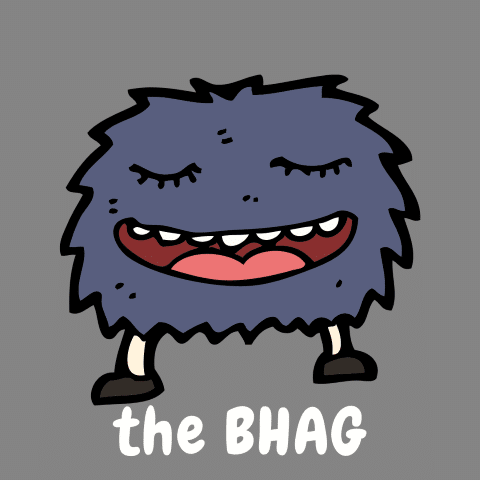
I received this quandary from a member:
“I don’t know what my long-term goals should be. I am making incremental improvement but I’m not sure what the long-term plan is”
First, I just want to say that continuing to make incremental progress is a tremendous win and I want to acknowledge you for that.
I know firsthand how easy it is to simply stop taking care of your health when you don’t know exactly where you want to go. Continuing to stay consistent and make progress gives you options as you are getting closer to any goal you choose!
When it comes to the actual goal itself, there are 2 main camps that I’ve found work for this.
Option 1 is to get crystal clear on a big, hairy, audacious goal, or BHAG for short.

This becomes your main motivator, and you align your exercise, nutrition, sleep, and honestly, parts of your life to do so.
This could be reducing your blood pressure, as many members at LSFW have done, or something like hiking the El Camino Trail or Kilimanjaro, as others have done.
There is no right or wrong to what your goal could or should be.
I wrote a blog post about this, so instead of retyping it all, you can check it out here HERE.
Now, I know sometimes you aren’t clear on exactly what the goal is, but you have a general sense of “I know I want to be healthy and live a long time, with an outrageously good quality of life,” and that can make setting a clear “I’m doing X thing by Y date” hard to do.
(That’s how I personally feel – I don’t have a specific thing on a specific date, I simply know I don’t ever want my health to be an obstacle to living my best life).
And this leads perfectly into option 2 – setting monthly mini-goals (aka habits).

Contrary to popular belief, you don’t have to be getting fit for a specific event to make meaningful improvements.
I am personally a huge fan of taking a less intense approach and deciding “what do I want to accomplish this month?” and it works really well for a few reasons.
- A smaller time frame feels like a smaller commitment. If you’re someone who can get discouraged by a BHAG, don’t set one, as it’s not serving you. Simply focusing on the next month is much easier to mentally wrestle, while still giving you direction.
- It keeps things simple. Climbing Kilimanjaro is a big feat and has a lot of moving parts. I had a blast training a client for it, and we had a LOT of aspects to manage for his success. A monthly goal can be something as easy as “workout 10 times”. It’s simple and easy to track, and as you hit your monthly goals month over a month, it gives you an incredible amount of “I can do this” momentum.
- Smaller goals don’t overwhelm your life. If you do want to accomplish something big, often you have to sacrifice more than just time for workouts. If living a fun life is the priority right now, a mini goal is likely actually better from a mindset and success standpoint.
- Lastly, and possibly most importantly, I love the mindset of “12 weeks out” and it’s how I think about my personal goals. You might change your mind on where you want to go, but if you are consistent in setting and hitting monthly mini-goals, and if you ever do decide on a BHAG, you’re probably only 12 weeks out from hitting it.
It’s a tremendous feeling, knowing that once you’ve got a steady, incrementally improving level of fitness if you decide to change course, you are always within striking distance.
Want to improve your golf game? It’s only 12 weeks away (and probably already getting better with regular training)
Want to lean out for summer? 12 weeks out.
Want to tackle a big project at the cottage you know you need strength and endurance for? 12 weeks out.
Want to do a fun run or 5k? 12 weeks out.
After all, staying strong, injury-free, with great cardio/endurance, and robust mental health is always a plus.
And consistent training is what accomplishes all of these, even if you don’t have a BHAG right now.
If you have a specific goal but aren’t sure where to start, it can help to sit down with an LSFW team member and flesh out some goals – click here to book a call.



